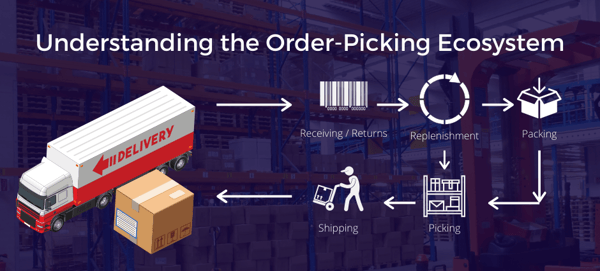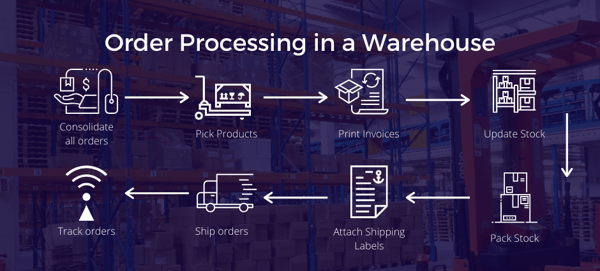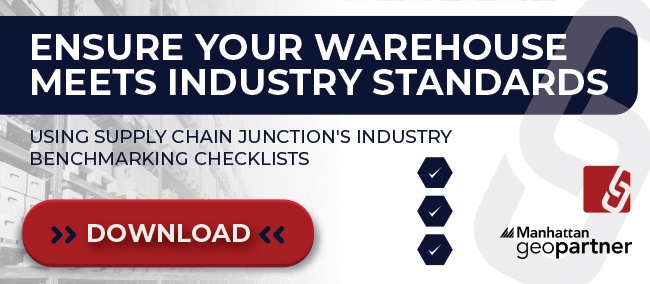Your Middle-East Supply Chain Infrastructure: Efficient, or Effective?


You don’t have to choose, but you do need a partner who can help you make it happen.
A well-functioning supply chain is not only effective, but also efficient. In this article, we explain the differences between efficiency and effectiveness, how your picking process can affect this, and why flexibility is a must in your WMS.
Efficiency versus effectiveness
Efficiency generally refers to the extent to which a process uses resources in the best way possible to ensure the fast, smooth running of systems. An efficient supply chain makes the best use of its resources — financial, human, technological or physical. By doing so minimises costs for materials and packaging and reduces time wastage.
Effectiveness, on the other hand, refers to the extent to which a process produces the kinds of results sought. In comparison, an effective supply chain is one that meets or exceeds the demands placed on it by its key stakeholders – whether these are customers, partners, suppliers or vendors.
It is possible for a supply chain to be one but not the other!
There are some key features of each that differentiate them from one another. For example, if you have an efficient supply chain, your processes may move very quickly, and you may deliver final products to customers in excellent time, but this does not necessarily mean that the product they receive will meet their specifications.
In this case, your supply chain is efficient because the turnaround time for delivery to customers is quick, but it is ineffective because the product that is delivered is of poor quality, and as such does not meet the demands of your customer.
From another perspective, your supply chain can be effective if it provides a quality service or product to your customer which adequately meets their demands. That is, the product or service you deliver is of the quality and standard they expect.
In this case, it would be considered inefficient if that same product took an excessive amount of time to be delivered to the customer.
How to maintain both efficiency and effectiveness in your warehouse
4 ways to measure warehouse efficiency:
- Complete regular and extensive operational audits.
- Define your warehouse goals.
- Establish KPIs for your warehouse workers.
- Chart your fulfillment performance.
To summarise, maintaining an efficient supply chain is largely about considering the best practices for internal processes, whereas an effective one requires considering external factors in order to meet external demands.
In order to improve effectiveness, business owners need to be in constant communication with external stakeholders to improve the standard of the products and services they deliver.
In order to improve supply chain efficiency, business owners must thoroughly check internal processes to make sure that resources, time and money are being used to streamline processes and reduce wastage and error.
Today we will turn an eye to outbound processes, picking, and in our next blog, specifically wave picking.
What is outbound warehouse process?
Outbound logistics is the process of storing, transporting and distributing goods to customers. The outbound logistics process starts with a customer sales order, moves on to warehouse packing and ends with product delivery.
Order picking is the process of finding and extracting products from a warehouse to fulfill customer orders. Since the order picking process involves significant cost and can affect customer satisfaction levels, there has been an increasing number of improvements proposed to help companies with this supply chain issue.
The order-picking sequence for efficiency improvements:
 Order processing is the process or work-flow associated with the picking, packing and delivery of the packed items to a shipping carrier and is a key element of order fulfillment at distribution centers. There are wide variances in the level of automation associated with the "pick-pack-and-ship" process, ranging from completely manual and paper-driven to highly automated and completely mechanised; the computer systems overseeing this process is your Warehouse Management Systems, and a good one ensures the flexibility to keep you efficient as well as effective!
Order processing is the process or work-flow associated with the picking, packing and delivery of the packed items to a shipping carrier and is a key element of order fulfillment at distribution centers. There are wide variances in the level of automation associated with the "pick-pack-and-ship" process, ranging from completely manual and paper-driven to highly automated and completely mechanised; the computer systems overseeing this process is your Warehouse Management Systems, and a good one ensures the flexibility to keep you efficient as well as effective!
Order processing for efficiency improvements:
- Picking: taking and collecting articles in a specified quantity before shipment to satisfy customers' orders.
- Sorting: separating items according to destination.
- Pre-consolidation or package formation: includes weighting, labeling and packing.
- Consolidation: gathering packages into loading units for transportation, control and bill of lading.
The order picking operation is one of a logistic warehouse's processes. It consists in taking and collecting articles in a specified quantity before shipment to satisfy customers' orders. It is a basic warehousing process and has an important influence on supply chain's productivity, making order picking one of the most controlled logistic processes.
Assess your processes against industry best-practices using our benchmarking checklists:
TAGS
- WMS (51)
- Warehouse Best Practice (46)
- Implementing a WMS (29)
- Managing your warehouse (19)
- Omni Channel (18)
- eCommerce (18)
- Blog (16)
- Supply Chain Best Practice (16)
- Customer Journey (9)
- Mid-Level (8)
- Warehouse optimisation (7)
- General Tips (5)
- Industry General (5)
- Information (5)
- Trends (5)
- managing your Supply Chain (5)
- saudi arabia (5)
- Press Release (4)
- smart warehouse (4)
- 3PL (3)
- News (3)
- ERP (2)
- Entry-level (2)
- ROI (2)
- Case Study (1)
- OMS (1)
- Picking (1)
- Solution-Specific (1)
- Transport Management System (1)
Take A Look At The Results Of A Successful WMS Implementation.
See how Tarsus Distribution, in collaboration with SCJ boost overall efficiency by 60%



.png?width=65&height=65&name=Untitled%20design%20(39).png)


